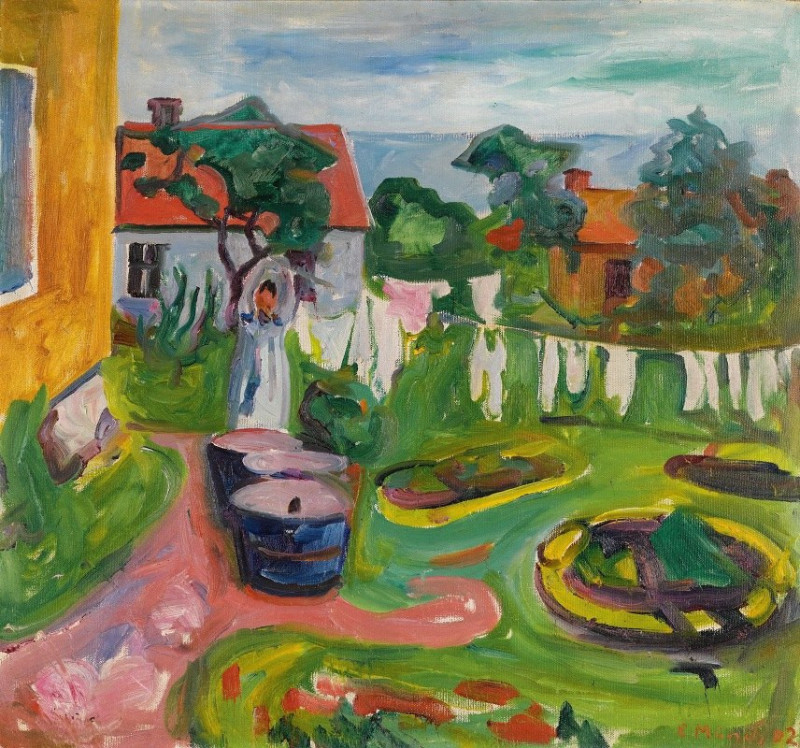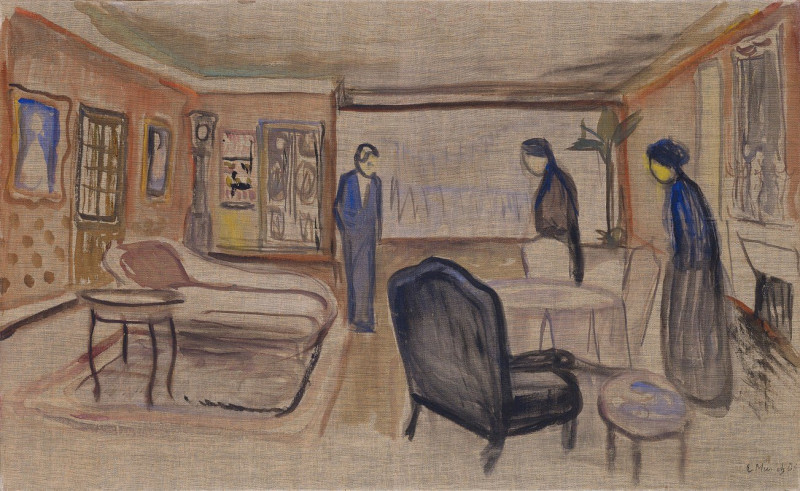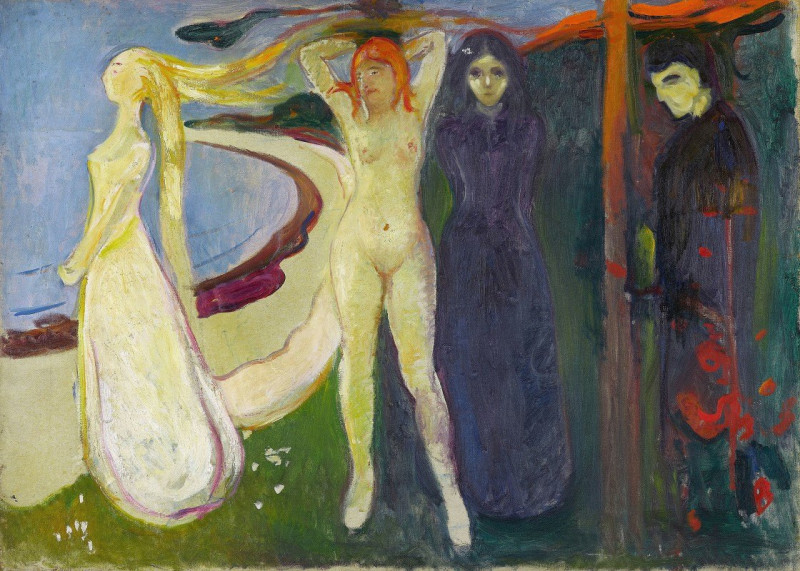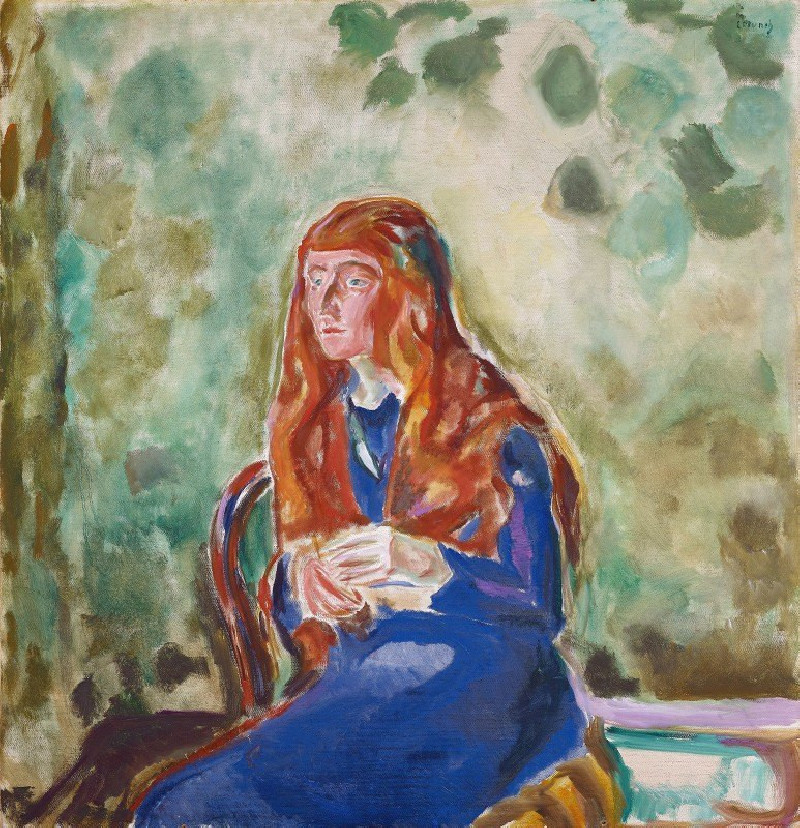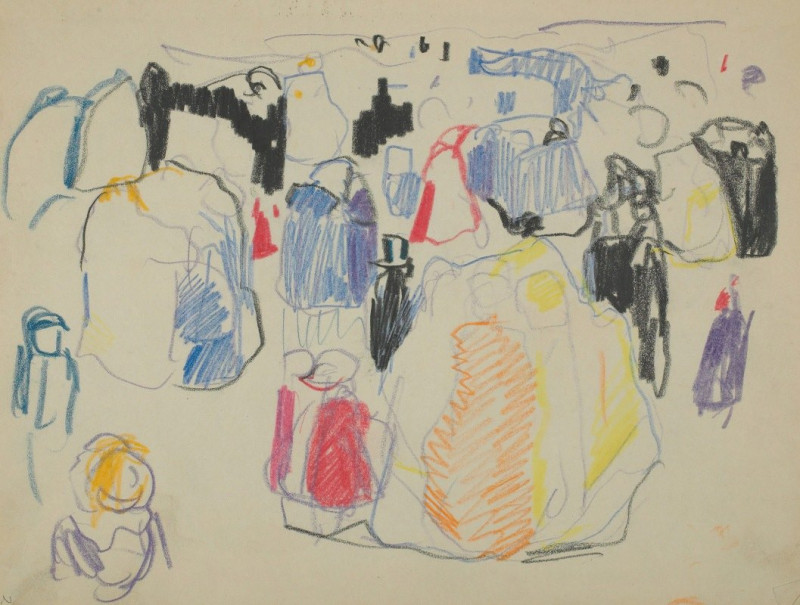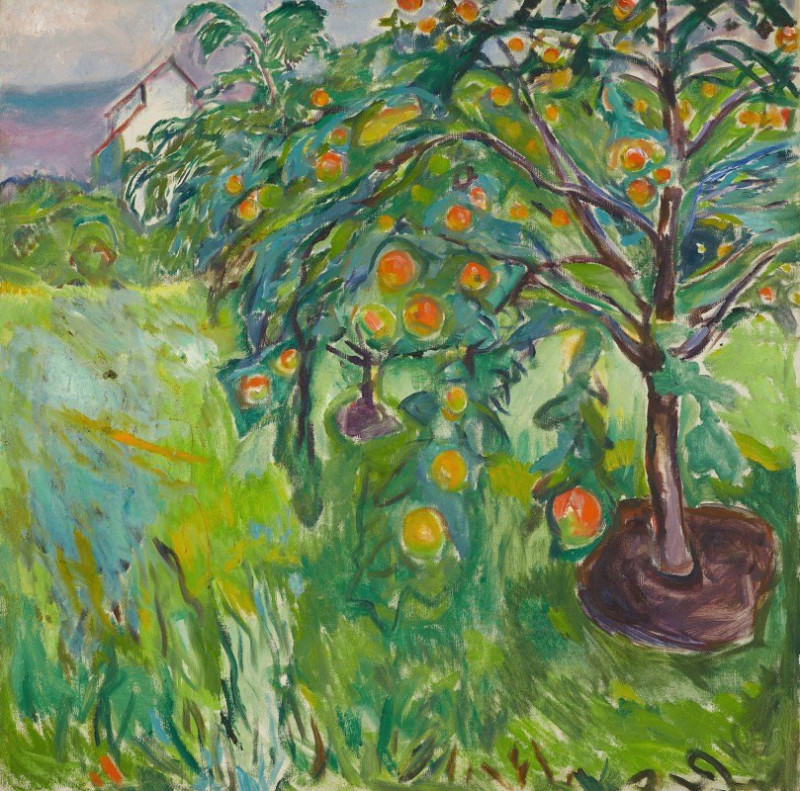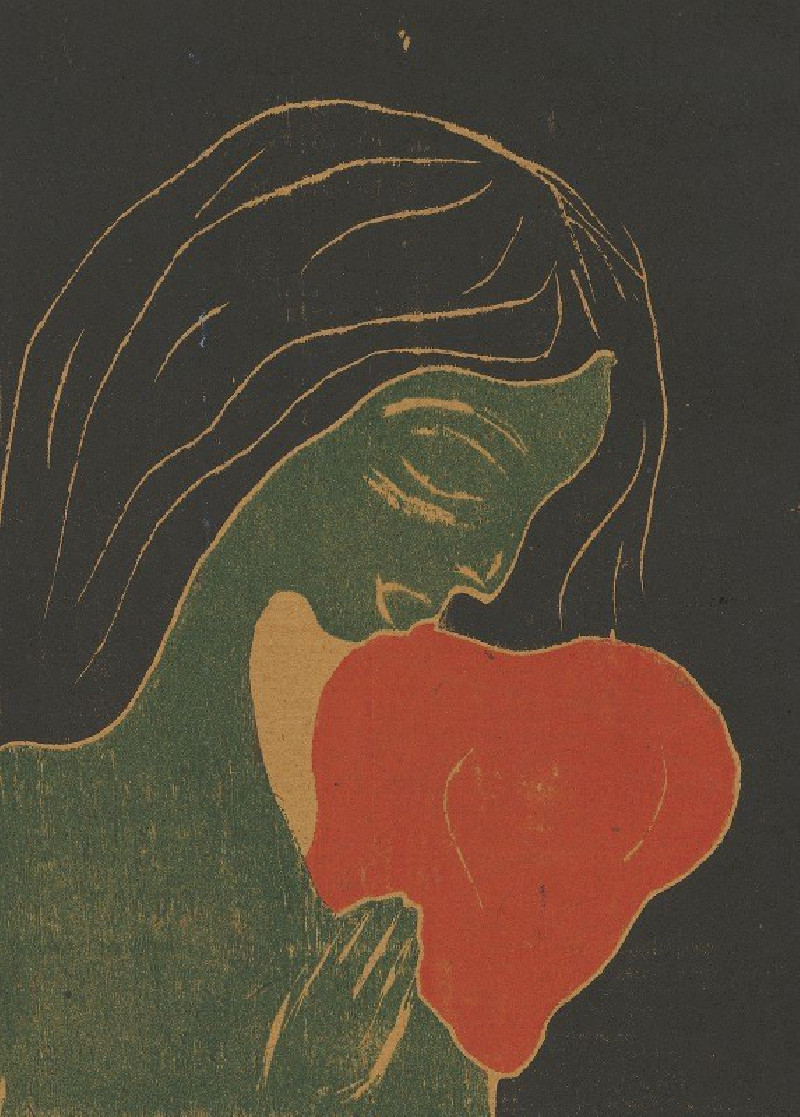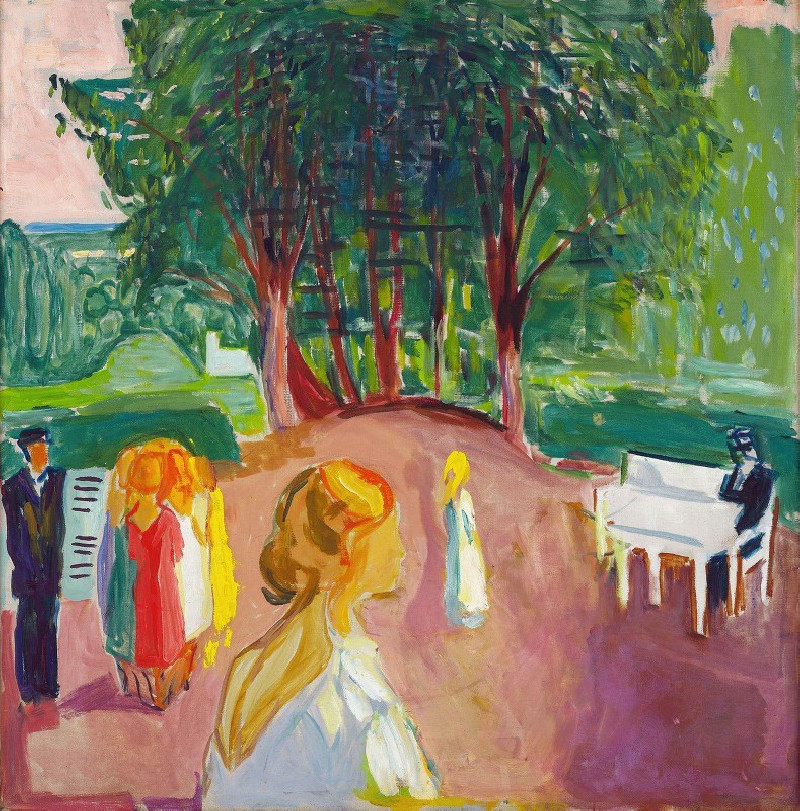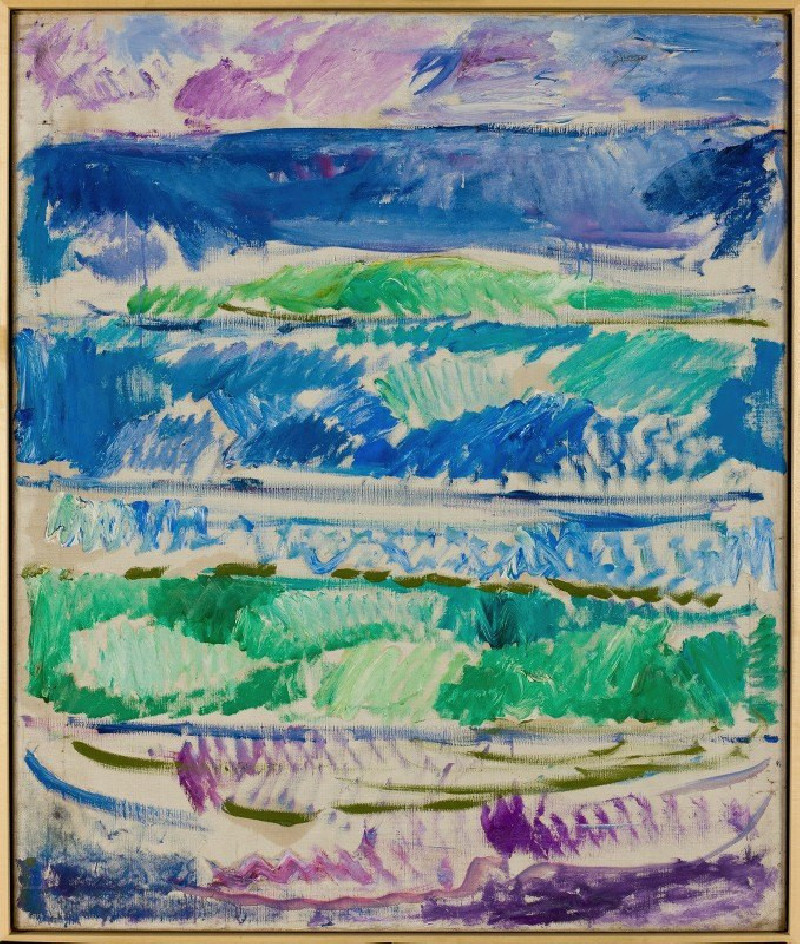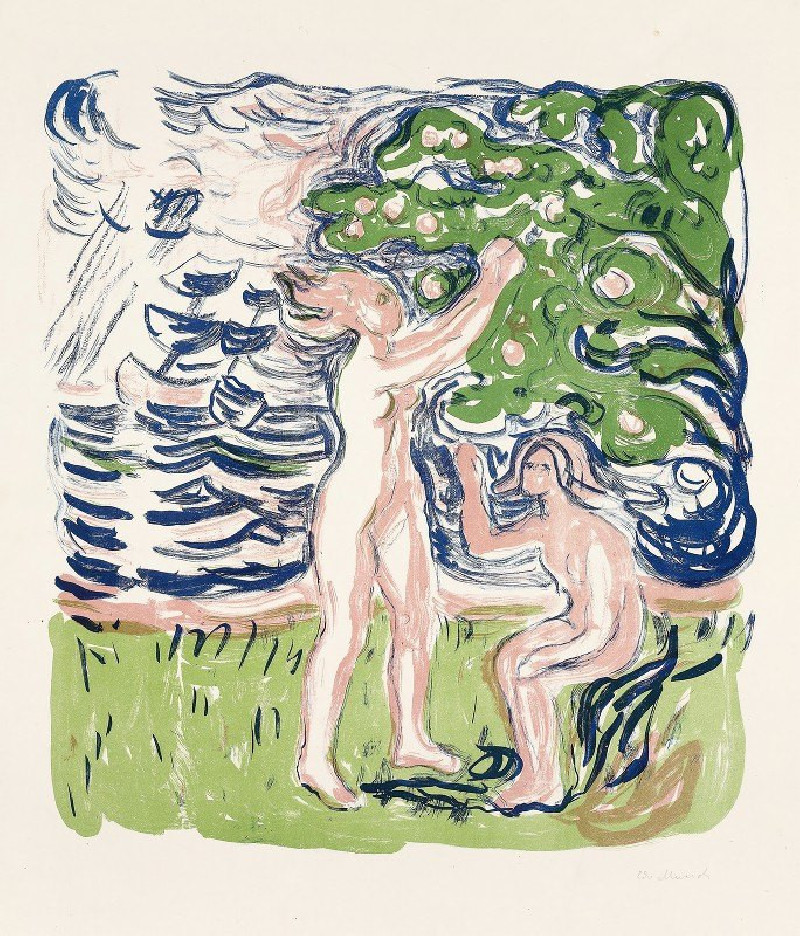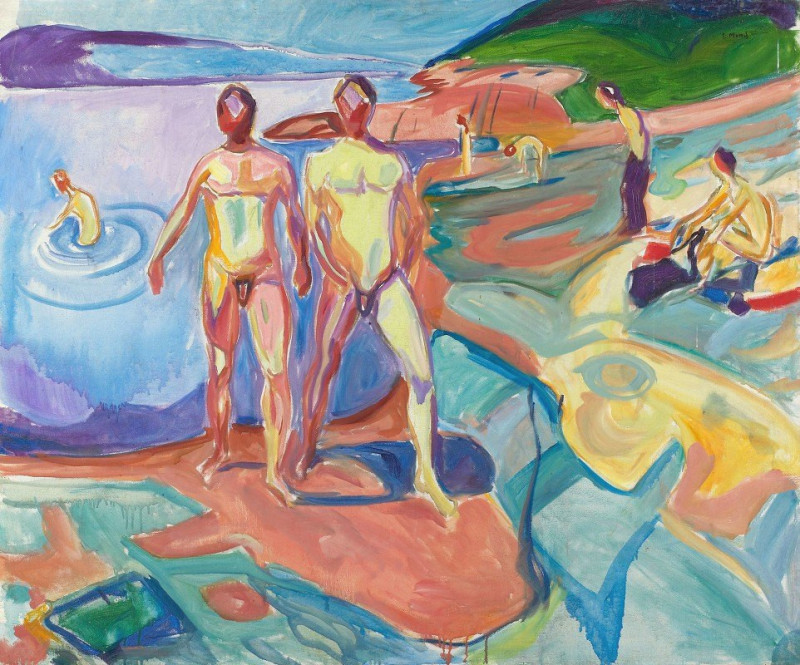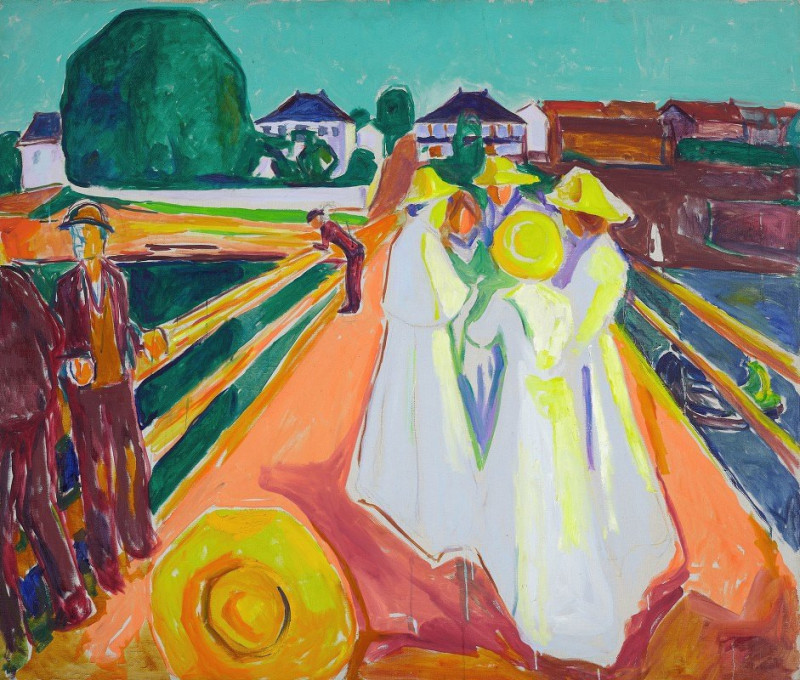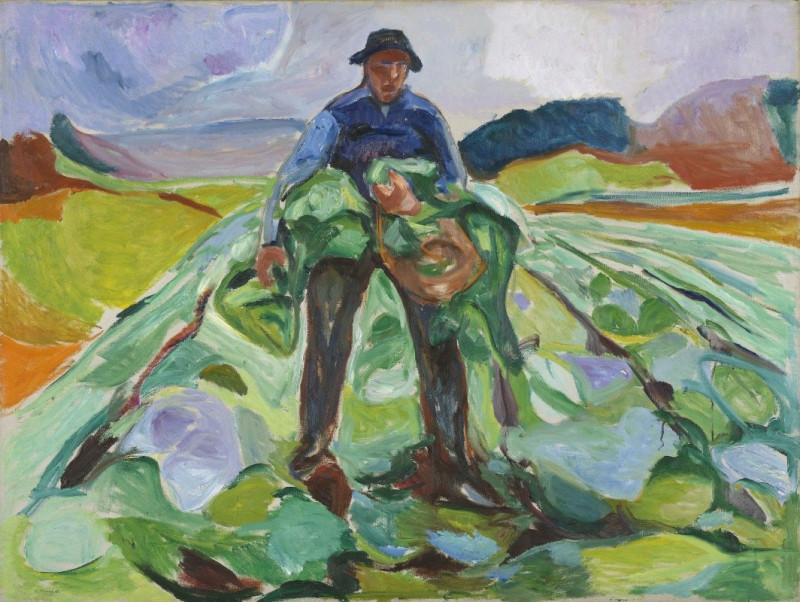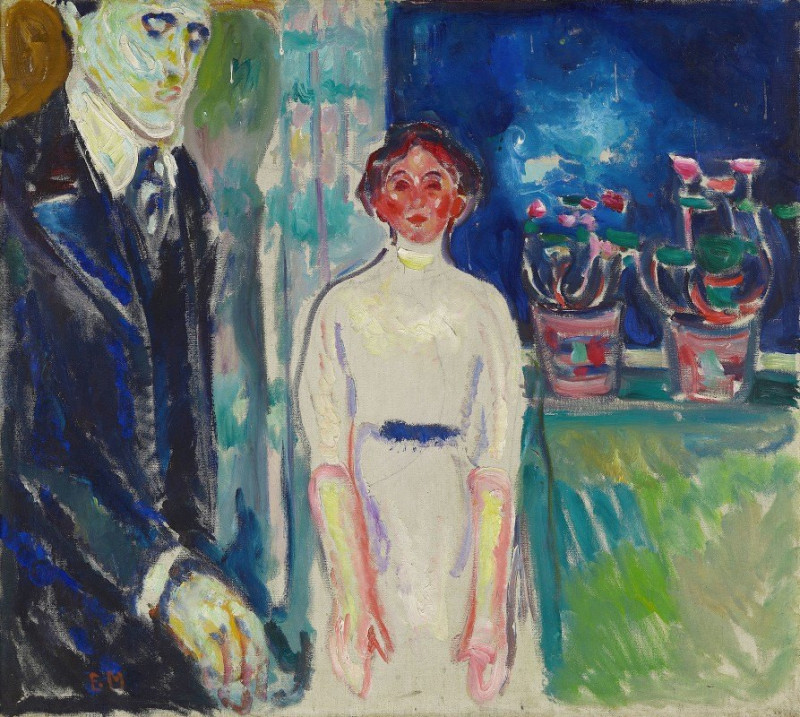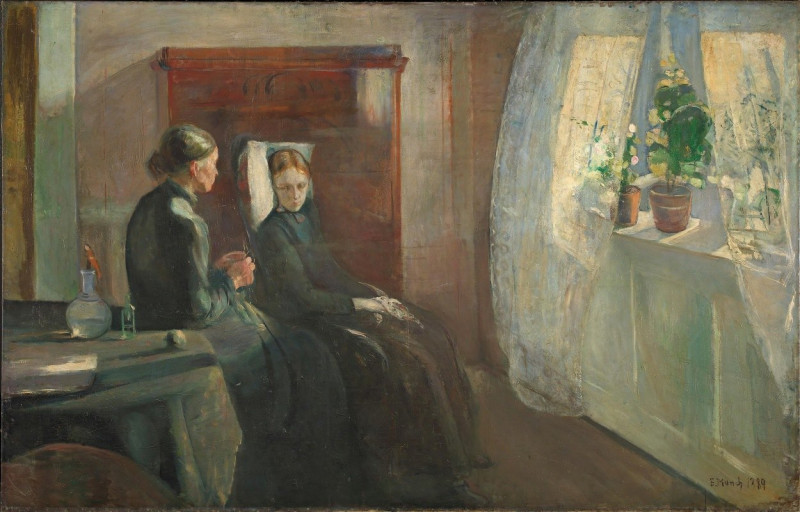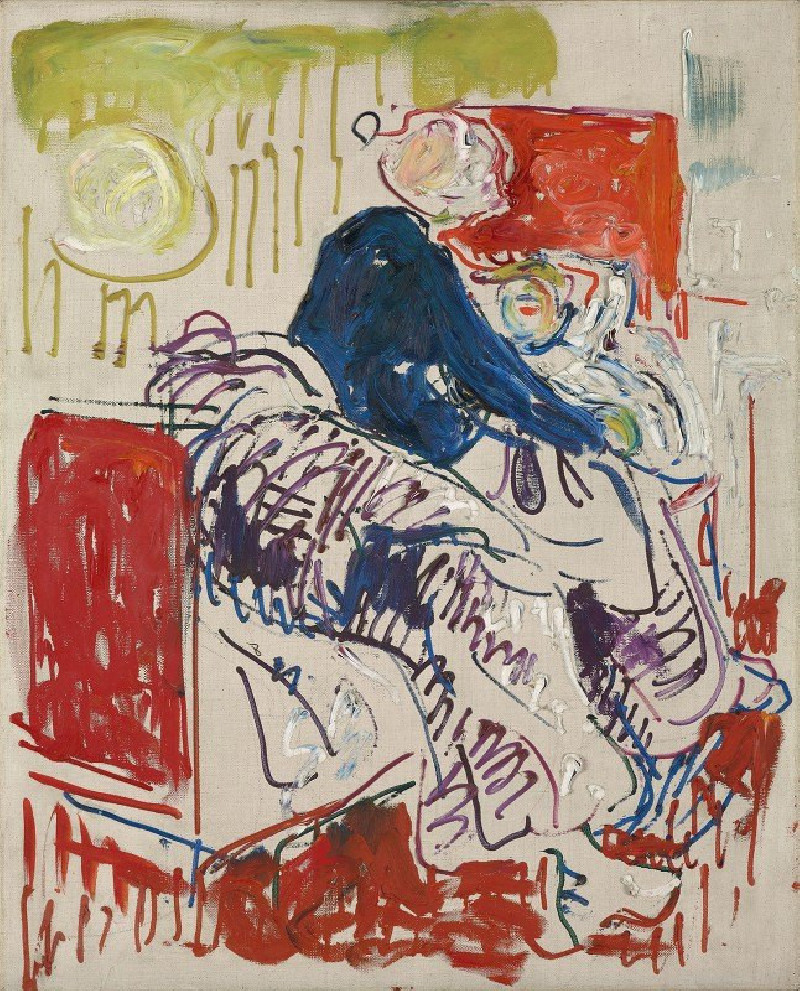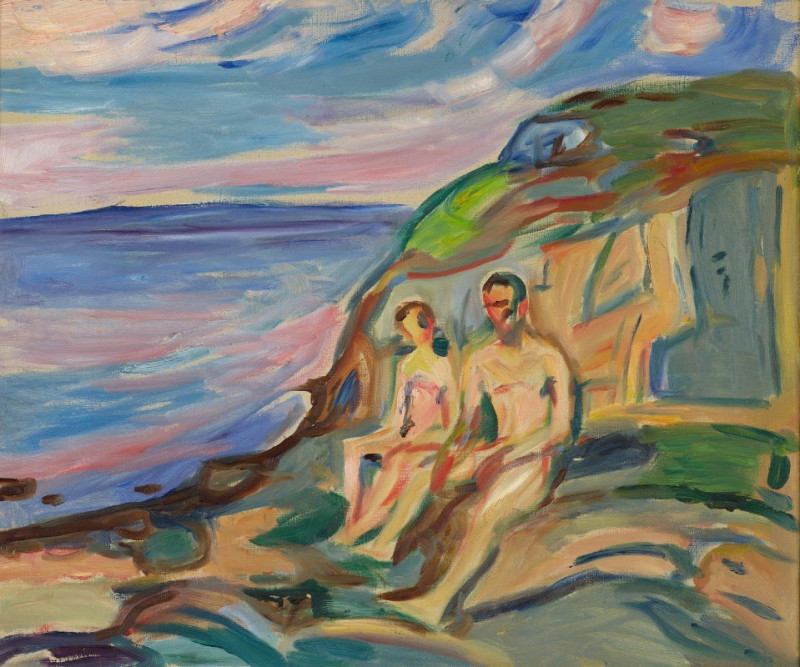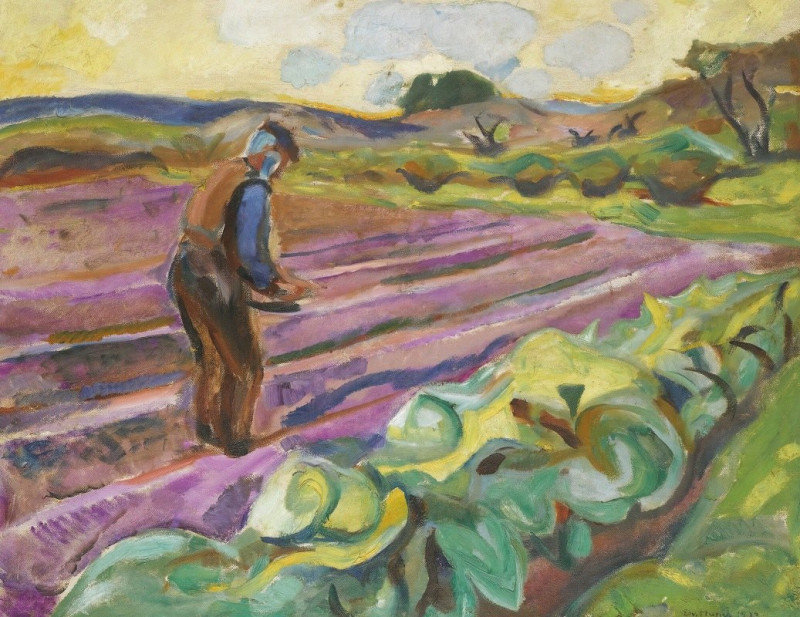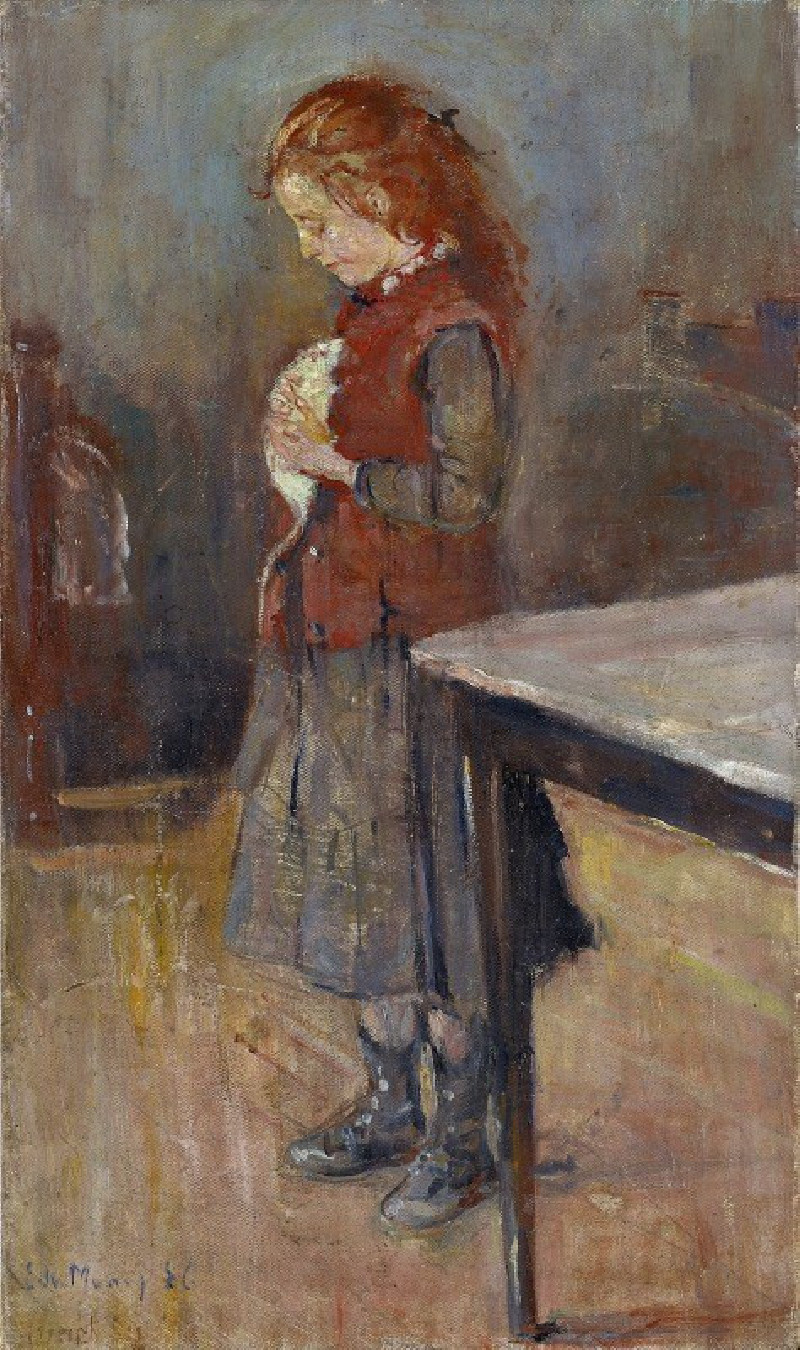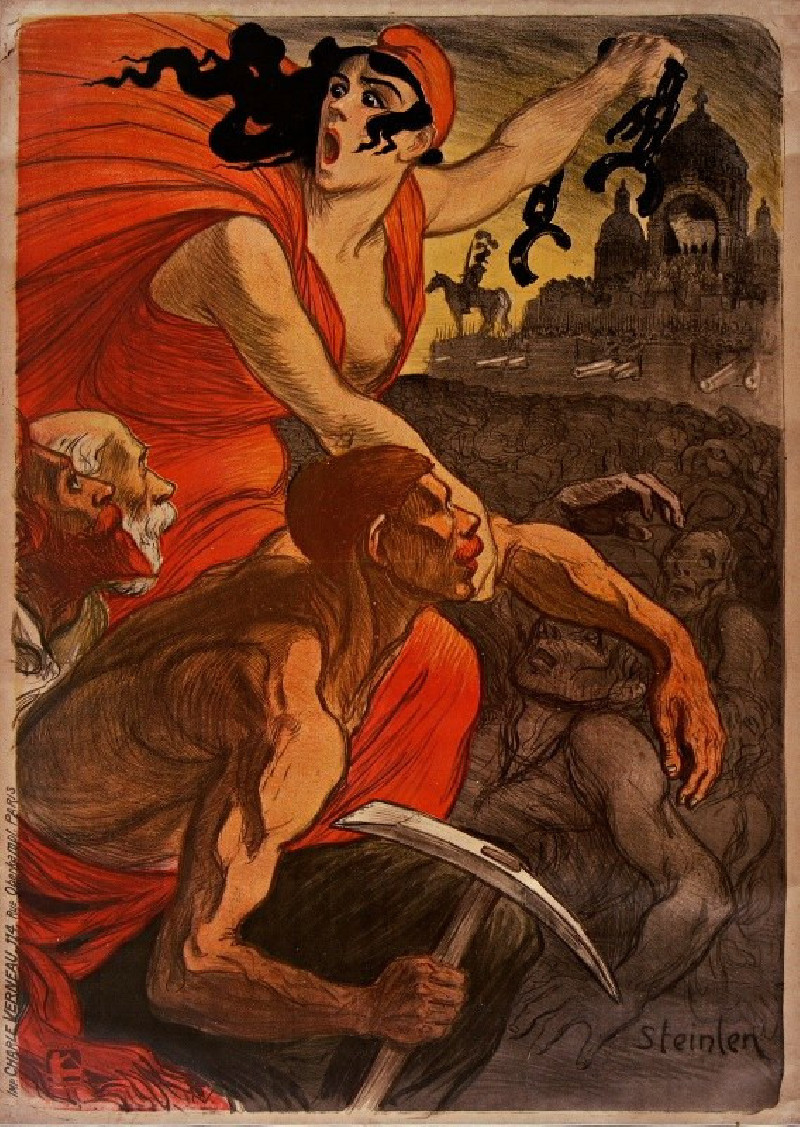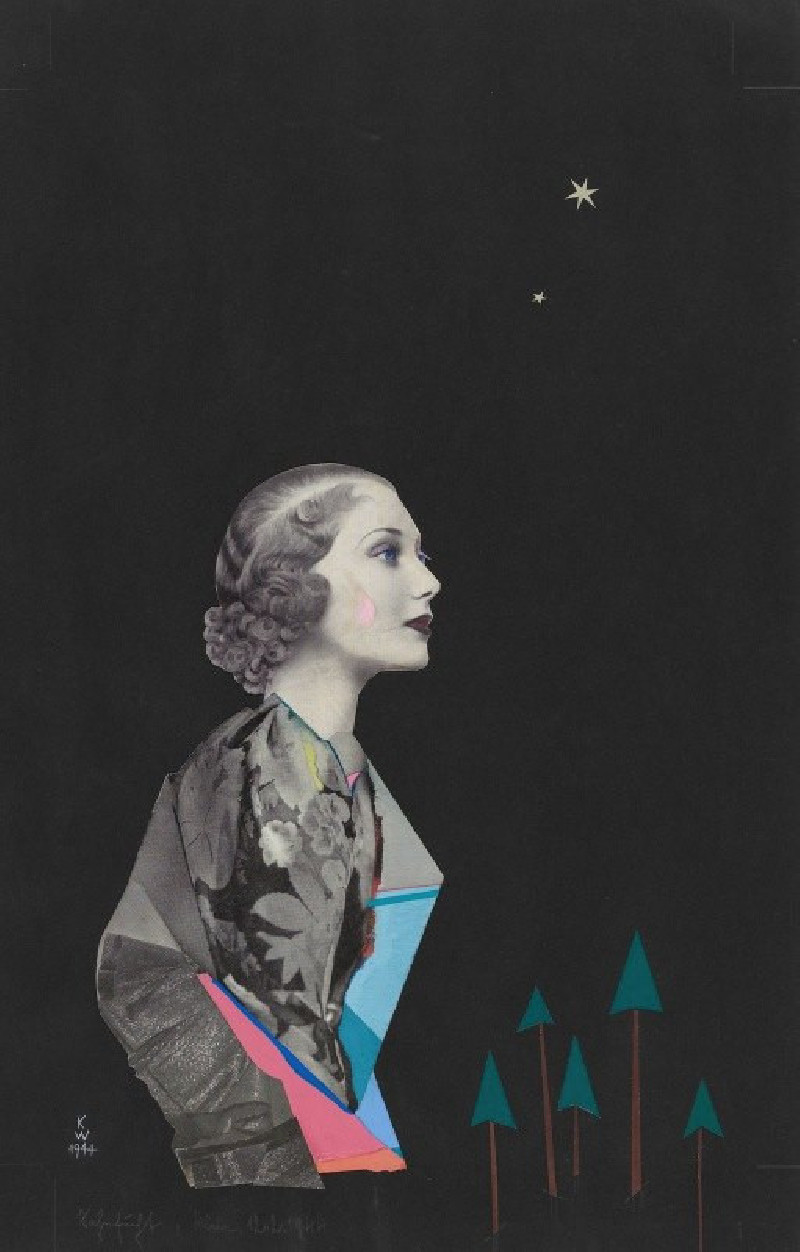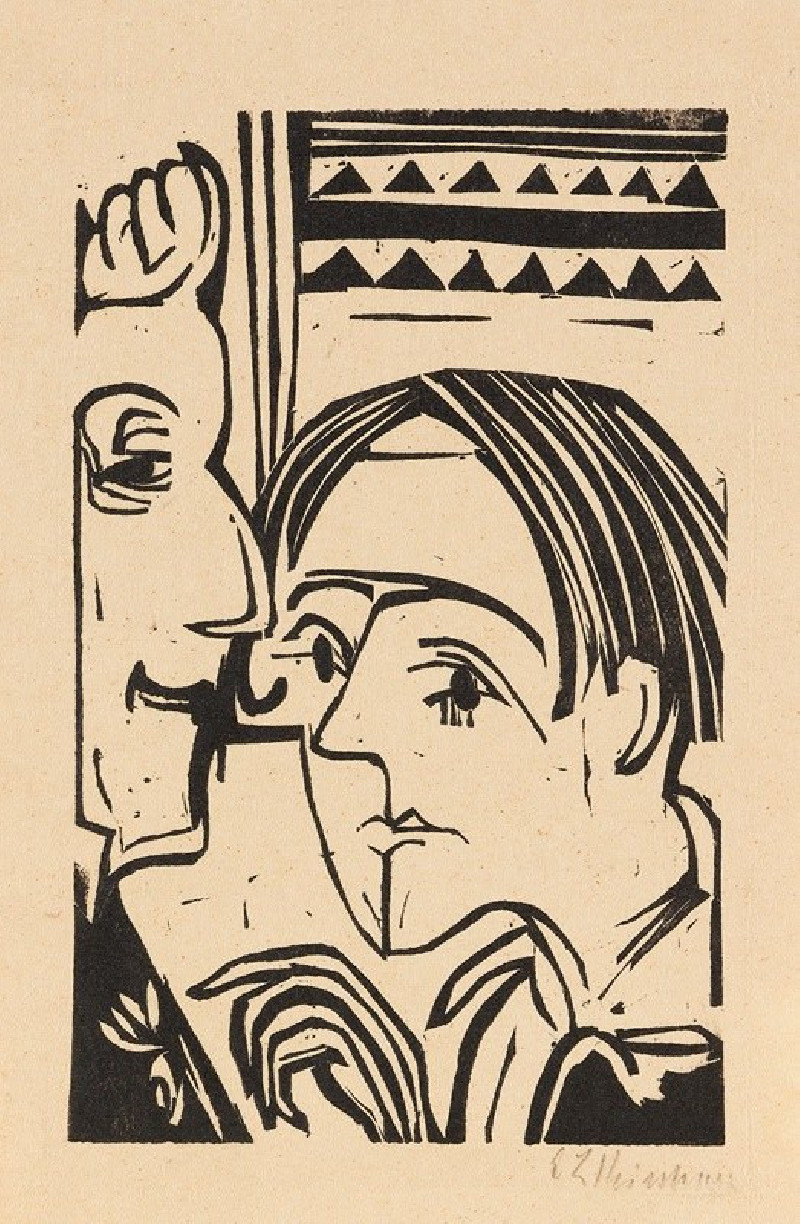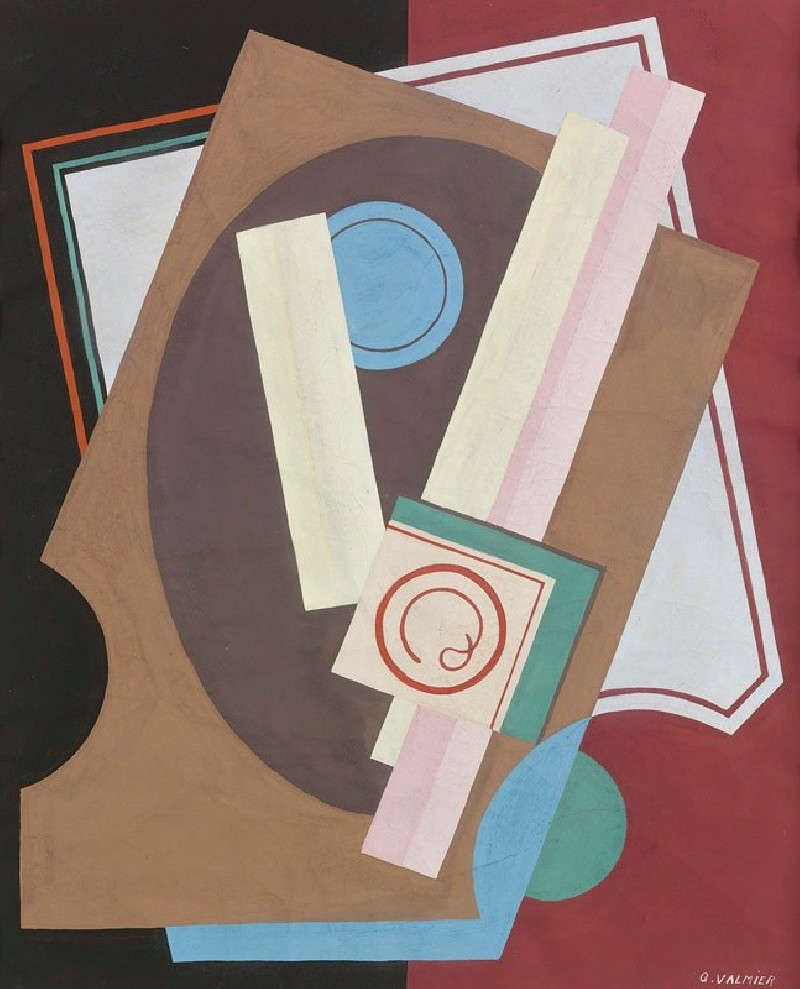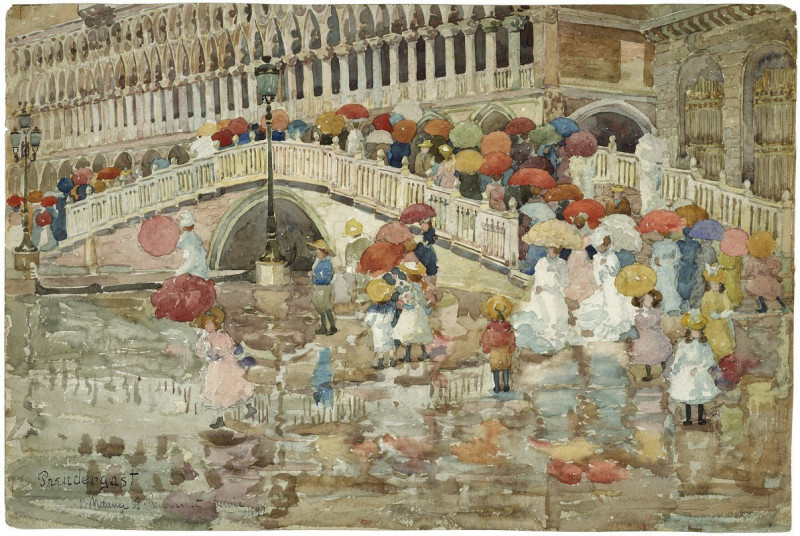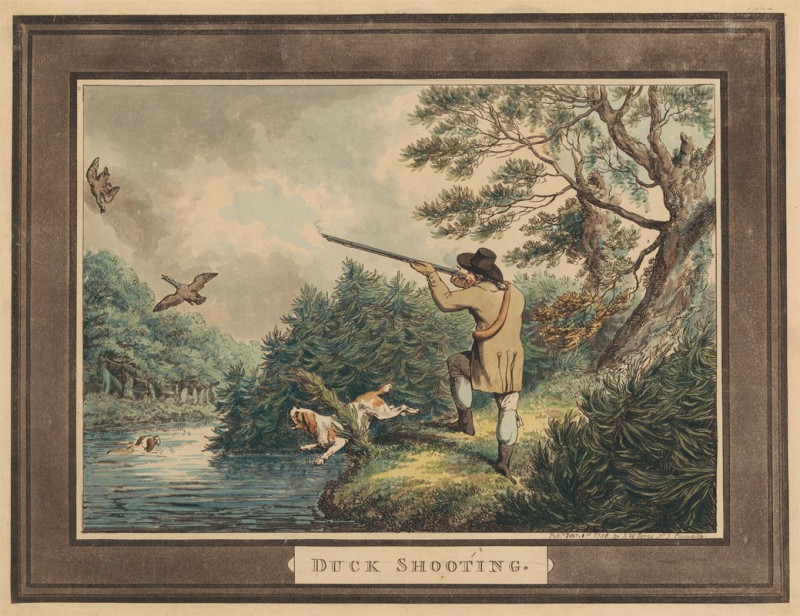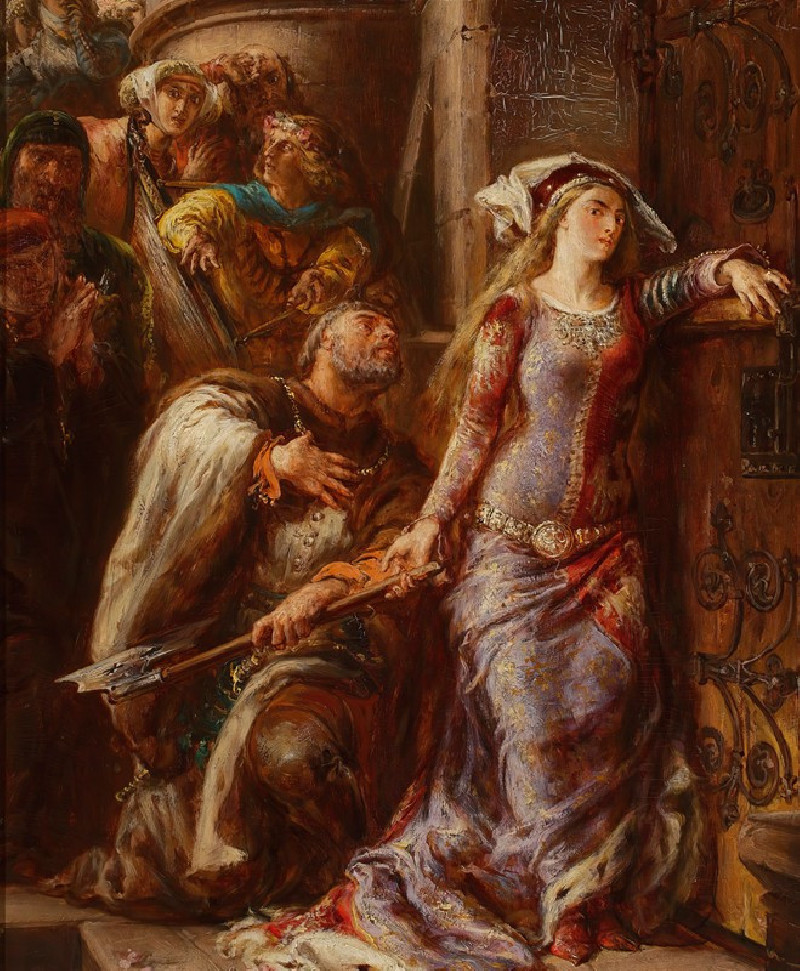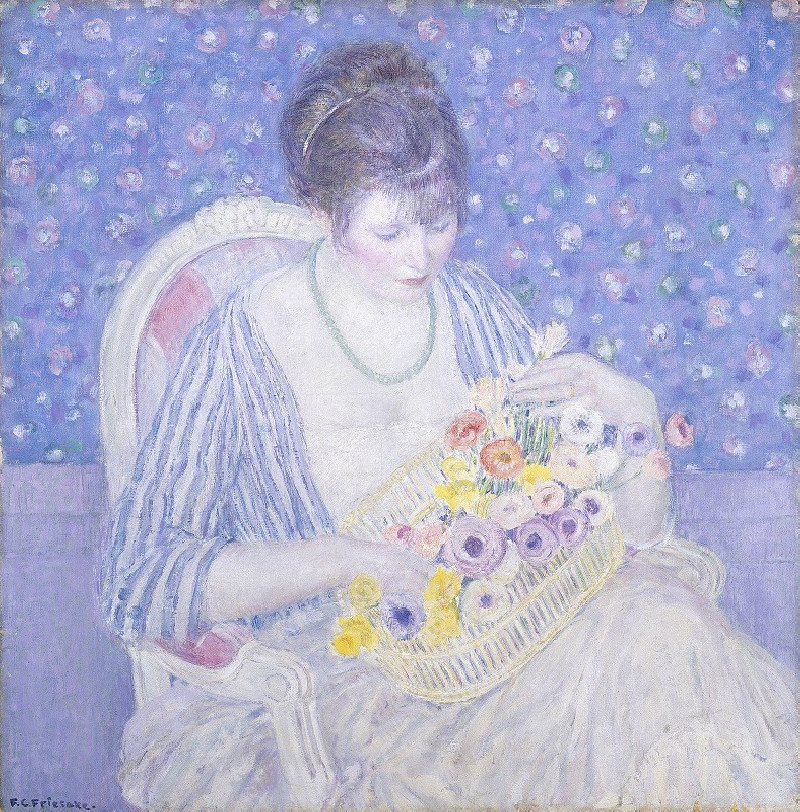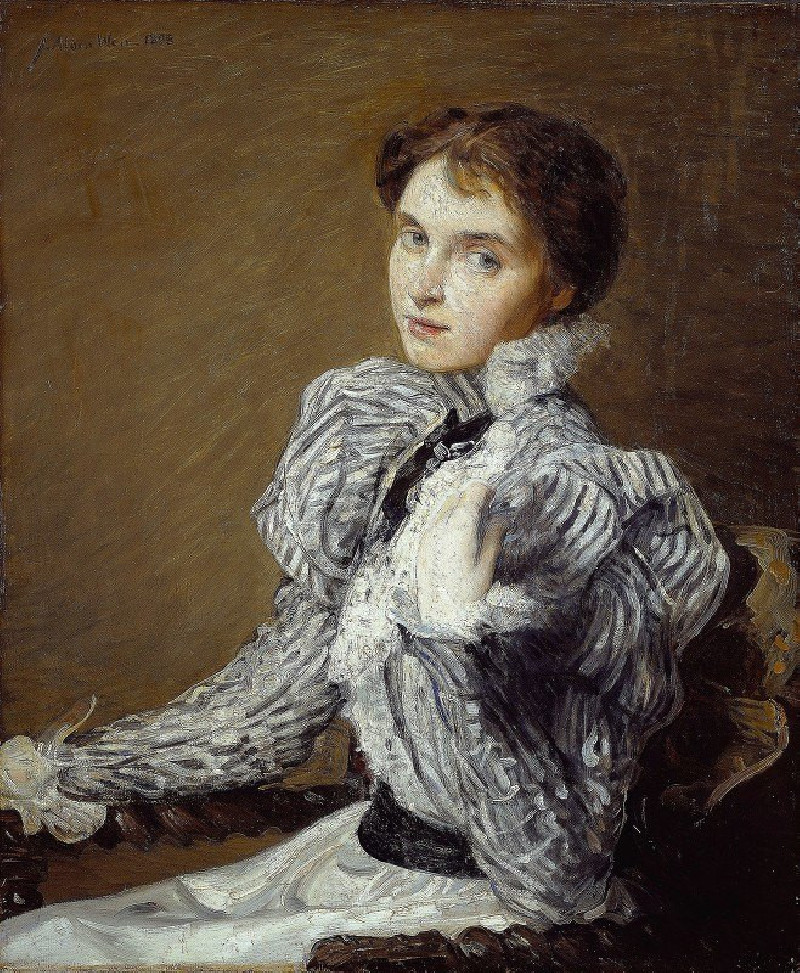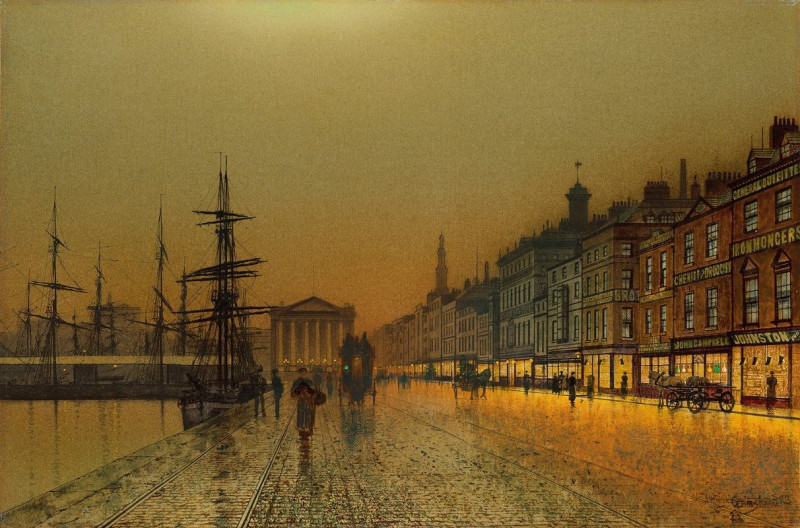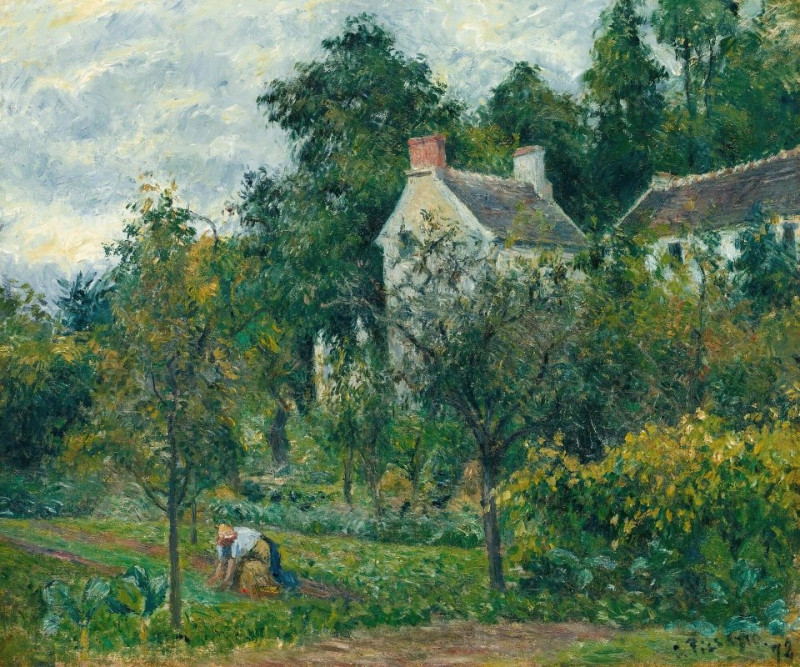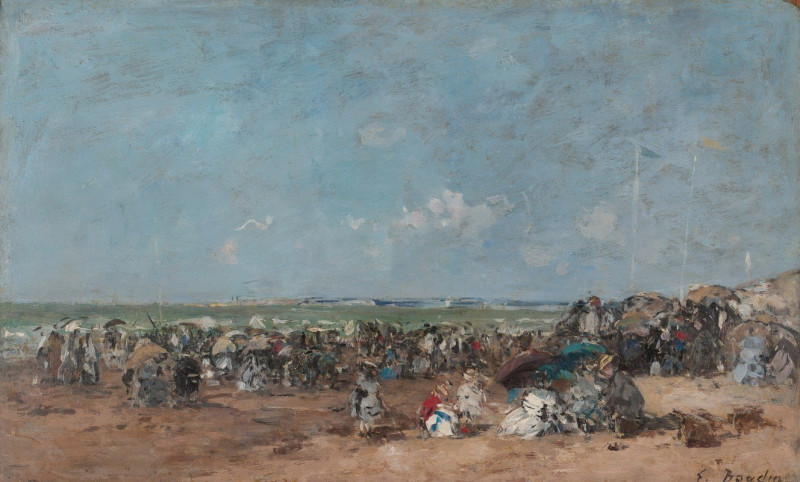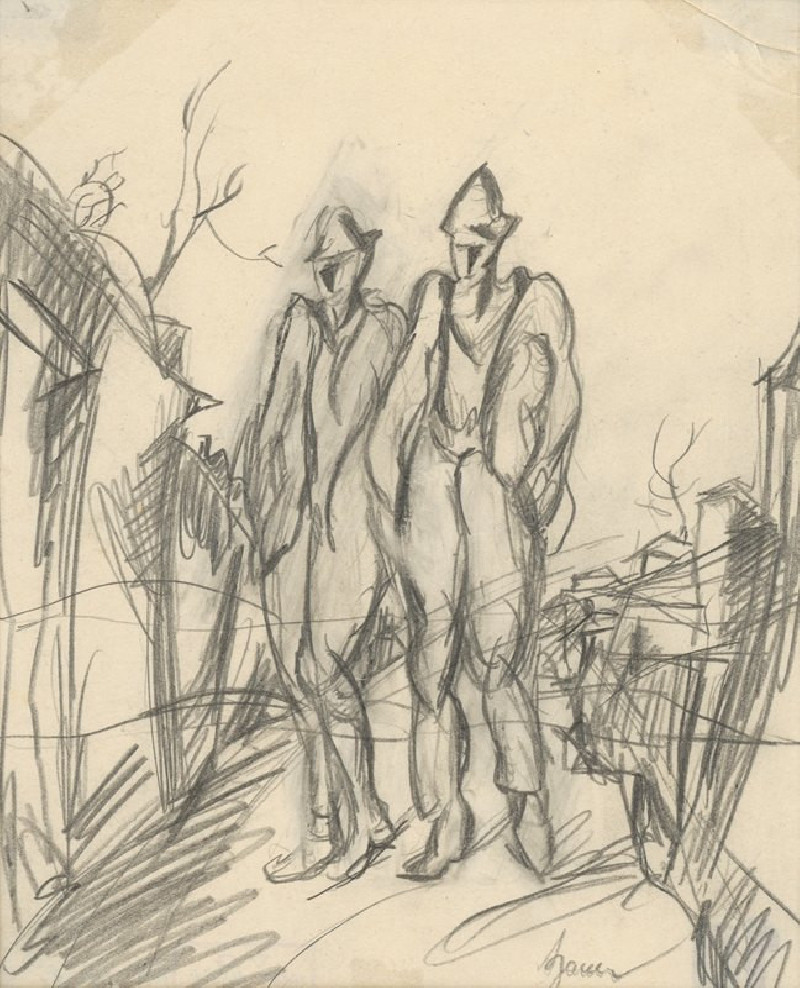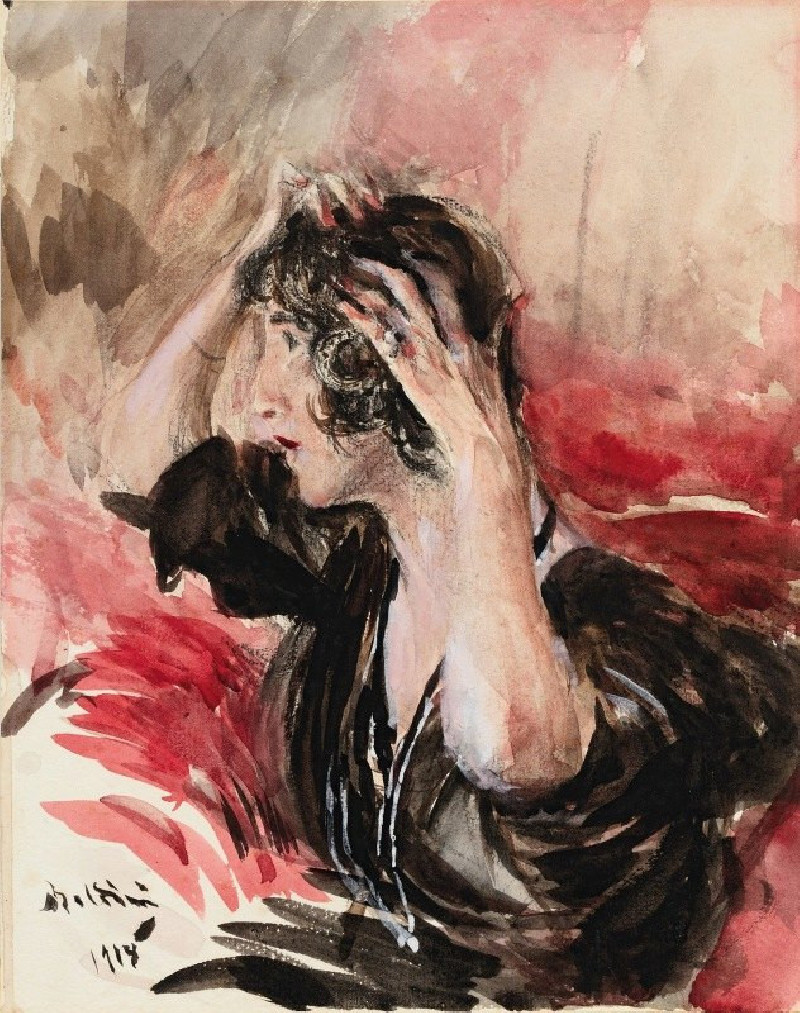Model by the Wicker Chair (1919–21)
Technique: Giclée quality print
Recommended by our customers
More about this artwork
"Model by the Wicker Chair" by Edvard Munch is a compelling expressionist painting that captures a figure, seemingly a female model, in an evocative and somewhat abstract manner. The use of bold, flowing lines and the interplay of vivid colors create a sense of emotional depth and psychological intensity, which is signature to Munch’s work.In the painting, the model stands nude, her posture slightly slouched, exuding a sense of vulnerability and introspection. Her figure is rendered with long, undulating strokes, predominantly in white and pale green, against a richly colored backdrop. Her face, obscured by shadow or possibly hair, adds a mysterious quality, suggesting perhaps introspection or melancholy.Around her, the environment is portrayed with less detail but vibrant colors, including the dramatically draped red and brown of what might be a blanket or a curtain nearby. This juxtaposition of the figure against the lively colors of her surroundings could be seen as reflecting the contrast between the individual and the external world.The title's mention of the wicker chair, although not prominently visible in the painting, suggests an element of domesticity, reinforcing the personal, intimate feel of the scene. The blend of realism and abstraction is typical of Munch's later works, where he moved away from his earlier, more somber themes to explore new dimensions of color and light, yet still retained his focus on the expression of inner emotions and human vulnerability.
Delivery
Returns
Edvard Munch (12 December 1863 – 23 January 1944) was a Norwegian painter. His best known work, The Scream (1893), has become one of Western art's most iconic images.
His childhood was overshadowed by illness, bereavement and the dread of inheriting a mental condition that ran in the family. Studying at the Royal School of Art and Design in Kristiania (today's Oslo), Munch began to live a bohemian life under the influence of the nihilist Hans Jæger, who urged him to paint his own emotional and psychological state ('soul painting'); from this emerged his distinctive style.



